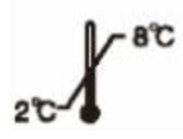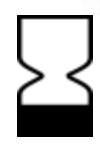Follicle-stimulating hormone (FSH)
The follicle-stimulating hormone (FSH) assay kit (magnetic microparticle chemiluminescence method) (hereinafter referred to as this kit) is used for the in-vitro quantitative detection of follicle-stimulating hormone (FSH) in human serum.
Keywords:
Sex hormone
Category:
Sex hormone
Brochure Download:

Tel:
Follicle-Stimulating Hormone (FSH) Assay Kit
Instructions for Use (Magnetic Microparticle Chemiluminescence Method)
Instruction of Follicle-Stimulating Hormone(FSH)Detection Kit(Magnetic Solid Phase Chemiluminescent Immunoassay)
【Product Name】
Generic Name: Follicle-Stimulating Hormone (FSH) Assay Kit (Magnetic Microparticle Chemiluminescence Method)
English Name: Follicle-Stimulating Hormone (FSH) Detection Kit (Magnetic Solid Phase Chemiluminescent Immunoassay)
【Packaging Specifications】
50 tests/box, 100 tests/box, 200 tests/box.
Calibrator: 6 × 0.55mL (optional), 2 × 0.55mL (optional)
Quality Control: 2 × 0.75mL (optional)
【Intended Use】
The Follicle-Stimulating Hormone (FSH) Assay Kit (Magnetic Microparticle Chemiluminescence Method) (hereinafter referred to as this kit) is used for the in-vitro quantitative determination of Follicle-Stimulating Hormone (FSH) in human serum. Follicle-stimulating hormone (FSH) is a glycosylated protein hormone synthesized and secreted by basophilic cells in the anterior pituitary gland, with a molecular weight of 35.5 kDa. FSH is one of the main protein hormones involved in the growth and development of follicles, mainly promoting the proliferation and hormone secretion of granulosa cells in the follicles. FSH regulates a series of physiological processes related to human growth and development, puberty, and reproduction, and plays a crucial role in the maturation of germ cells. In mature women, FSH stimulates follicle development, and the levels of FSH and LH in the blood change with the levels of estradiol and progesterone. FSH increases significantly before ovulation, reaching a peak. That is, a significant increase in LH and FSH can be observed in the pre-ovulatory phase; after ovulation, the follicle ruptures, and the developed corpus luteum secretes estradiol and progesterone, which feedback regulate the circulating levels of FSH. During menopause, ovarian function decreases with the decrease in estradiol secretion. Due to the removal of negative feedback on the hypothalamus, the concentration of FSH in the blood circulation increases significantly. In adult males, FSH acts on Sertoli cells in the seminiferous tubules of the testes, initiating and regulating spermatogenesis in the testes. Together with LH and testosterone, it promotes and maintains sperm formation in the testes. Clinically, low FSH levels may indicate abnormalities in the hypothalamic-pituitary axis. Secondary hypogonadism, which may be caused by hypopituitarism, is also one of the causes of infertility. Serum FSH determination can be used to evaluate pituitary function and for differential diagnosis of hypothalamic and pituitary diseases. Common laboratory diagnostic methods in clinical practice include immunochromatography, colloidal gold method, and chemiluminescence method.
【Test Principle】
This kit uses a direct sandwich method: biotin-labeled FSH antibody, acridinium ester (AE)-labeled FSH antibody, and FSH in the sample, calibrator, or quality control are combined to form a "sandwich" complex. Then, streptavidin-coated magnetic microparticles are added, and the antigen-antibody complex is connected to the magnetic particles through the specific binding of streptavidin and biotin. Under the action of an external magnetic field, the complex formed by the immunoreaction is separated from other unbound substances. After washing the complex, a pre-excitation solution and an excitation solution are added. Acridinium ester forms an unstable excited intermediate under the action of the pre-excitation solution and the excitation solution. When the excited intermediate returns to the ground state, it emits photons, forming a chemiluminescent reaction, which can be detected using a chemiluminescence instrument. Within the detection range, the chemiluminescence intensity is proportional to the FSH content in the sample, and the FSH concentration in the sample can be calculated using a four-parameter Logistic equation.
【Main Components】
1. Product Composition
FSH magnetic microparticle reagent: 1 bottle, streptavidin-coated magnetic microparticles;
FSH reagent 1: 1 bottle, biotin-labeled FSH conjugate;
FSH reagent 2: 1 bottle, acridinium ester (AE)-labeled FSH antibody conjugate;
Calibrator (optional): 6 bottles or 2 bottles, containing BSA buffer with different amounts of FSH antigen added, calibrator values are obtained by scanning the calibrator QR code;
Quality control (optional): 1 bottle each of high and low points, containing BSA buffer with different amounts of FSH antigen added, the target range of quality control is obtained by scanning the quality control QR code.
Note ①: Reagents from different batches of kits are prohibited from being used interchangeably.
Note ②: Six calibrator points or two calibrator points are optional. If calibrators and quality controls have been provided to the user, the kit does not need to be reconfigured.
2. Companion Reagents
The following companion reagents are not included in this product but are required for detection:
Pre-excitation solution and excitation solution: Excite acridinium ester to catalyze the generation of photons, so that the chemiluminescence intensity can be detected using a chemiluminescence immunoassay instrument.
Washing solution: Diluted for washing the reaction system.
Source: Provided by our company.
Note: To ensure the accuracy of the test results, the manufacturer of the companion reagents should not be changed arbitrarily during the test.
3. Calibrator Traceability
The calibrator can be traced to the "National Standard Substance for Follicle-Stimulating Hormone (FSH) Immunoassay" provided by the China National Institute for Food and Drug Control.
【Storage Conditions and Shelf Life】
The reagents are stable for 15 months when stored at 2-8℃ away from light and should not be frozen.
After opening, the liquid reagents are stable for 30 days at 2-8℃ away from light.
【Production Date】
See product label.
Applicable Instruments
CosmAI SMART500S, 6500 or Tuochuang Medical TC-300 fully automated chemiluminescence immunoassay analyzer
Sample Requirements
1. This kit is suitable for serum samples.
2. After blood collection, serum should be separated immediately for analysis to avoid hemolysis. Testing must be completed within 24 hours at room temperature; it is stable for 3 days at 2-8℃ and 30 days at -20℃. Avoid repeated freezing and thawing.
3. Frozen or refrigerated samples should be returned to room temperature and mixed thoroughly before use.
4. Avoid using samples with severe hemolysis or high levels of lipemia.
5. The sample volume should be no less than 200μL.
Testing Method
Note: Please read the instructions carefully before use. Working conditions: Room temperature (15~35℃); Relative humidity ≤80%.
1. Pre-test preparation
1.1 Before the test, all reagents should be brought to room temperature, and the instrument should be preheated for at least 30 minutes;
1.2 According to the system operating instructions, perform the loading of reaction tubes (cups), the addition or replacement of matching reagents, waste liquid disposal, waste tube cleaning, and liquid path filling operations.
2. Reagent and Sample Loading
2.1 Before reagent loading, place the reagents to be used on a mixing device and mix thoroughly. Visually inspect the reagent solution components; they should be clear, free of foreign matter, precipitates, and flocculent matter. Magnetic microparticle reagents should be a uniform suspension without obvious aggregation;
2.2 According to the system operating instructions, scan the reagent barcodes to complete the loading of magnetic microparticle reagents and anti-reagents;
2.3 After mixing the calibrators and quality control samples, transfer them to the instrument's dedicated reaction cups and load them into the instrument's sample positions. After scanning, load the centrifuged serum samples directly into the instrument's sample positions.
3. Detection Steps
For optimal detection performance, please follow the relevant guidance in this instruction manual and operate according to the fully automated chemiluminescence analyzer operating manual.
Note: The detection reaction process and related parameters have been predefined in the instrument operating software.
4. Calibration Curve and Calibration
The calibration curve is obtained by scanning the main curve card to generate it directly, or by directly detecting six calibrator points to generate a fitted curve. The system also supports a two-point calibration method to obtain a working calibration curve.
Note ①: Due to inter-instrument differences and system differences caused by operators, operating environments, and different accompanying general reagents, the six-point direct calibration method is recommended to obtain the working calibration curve.
Note ②: Due to reagent activity drift and changes in general reagent batches, the calibrated working curve needs to be recalibrated after a certain period of use. Recalibration should be performed under the following circumstances:
l After 1 month (28 days) of using the same batch number of reagents;
l When using a new batch of reagents, the entire box or pre-activation liquid and activation liquid;
l When the quality control values are outside the quality control range;
l After each maintenance of the measuring instrument.
5. Result Output
The measuring instrument automatically calculates the FSH concentration of each sample using a working curve obtained by two-point calibration from the standard curve. The results are expressed in mIU/mL.
6. Quality Control
6.1 Two levels of quality control samples should be measured daily along with sample testing, treating the quality control samples as patient samples;
Note: It is recommended to use at least two levels of commercial quality control products. If the test results are within the system's acceptable quality control range or within your specified range (determined by an appropriate internal laboratory quality control program), the test results are satisfactory; otherwise, the test results are unreliable and a test report should not be issued.
Reference Range
|
Gender |
Period |
Normal Value Range (mIU/mL) |
|
Female |
Follicular phase |
3.5-12.5 |
|
Ovulation phase |
4.7-21.5 |
|
|
Luteal phase |
1.7-7.7 |
|
|
Menopausal period |
25.8-134.8 |
|
|
Male |
1.5-12.4 |
Note: The FSH levels measured will vary depending on the region, individual, and method used. Therefore, we recommend that each laboratory establish its own normal value range. A diagnosis should not be made based solely on the FSH value obtained by this method. The results should be analyzed in conjunction with other clinical data, including the patient's specific condition and treatment status.
Interpretation of Test Results
1. Due to methodological or antibody specificity reasons, testing the same sample using reagents from different manufacturers may yield different results. Therefore, results obtained using different reagents should not be directly compared to avoid erroneous medical interpretations.
2. Test results exceeding the measurement range of the kit are calculated results obtained by extrapolating the calibrator curve. When reporting such results, please pay special attention. If an accurate value is desired, dilute the sample appropriately before testing. The maximum dilution factor is 100 times.
3. Quality control products can serve as a reference for the reliability of the experimental results. The measured values should be within the allowable range specified on the quality control sheet for this batch of products. The test results should be determined comprehensively based on the reference range, other clinical factors, and results. When the test result is close to the upper limit of the reference range, a confirmatory test on the sample may be considered.
Limitations of the Test Method
1. Severe hemolysis (hemoglobin ≥500mg/dL), lipemia (triglycerides ≥1500mg/dL), jaundice (bilirubin ≥20mg/dL), and contaminated samples may affect the test results and should be avoided.
2. The test results of this kit are for clinical reference only and cannot be used alone as the basis for confirming or excluding cases. To achieve diagnostic purposes, this test result should be used in conjunction with clinical examinations, medical history, and other examinations.
3. This product can be used for the determination of human serum samples. The reliability of determining FSH concentration in other body fluid samples has not been fully confirmed.
Product Performance Indicators
1. Reagent Performance Indicators
1.1 Accuracy: Within the linear range of the kit, when measuring the national standard of follicle-stimulating hormone (FSH), the relative deviation of the measured results should be within ±10%.
1.2 Precision: Intra-batch precision ≤8%, inter-batch precision ≤10%.
1.3 Blank limit: Should not exceed 0.5mIU/mL.
1.4 Linearity: Linear range (0.5~150) mIU/mL, correlation coefficient r≥0.9900.
1.5 Specificity: The measured result of thyroid-stimulating hormone (TSH) with a concentration not less than 200mIU/L on this kit should not exceed 0.5mIU/mL; the measured result of luteinizing hormone (LH) with a concentration not less than 200IU/L on this kit should not exceed 0.5mIU/mL; the measured result of human chorionic gonadotropin (Total-hCGβ) with a concentration not less than 1000IU/L on this kit should not exceed 0.5mIU/mL.
2. Calibrator Performance Indicators
2.1 Accuracy: Within the linear range of the kit, when measuring the national standard of follicle-stimulating hormone (FSH), the relative deviation of the measured results should be within ±10%.
2.2 Homogeneity: Inter-bottle difference (CV) ≤8%.
3. Quality Control Product Performance Indicators
3.1 Expected results: The test value should be within ±15% of the target value of the quality control product.
3.2 Homogeneity: Inter-bottle difference (CV) ≤8%.
Precautions
1. This reagent is for in-vitro diagnostic use only. Reagents from different batches are prohibited from being used interchangeably. Do not use expired reagents.
2. Some components of this kit contain bovine-derived materials, but these raw materials are not from countries or regions with bovine spongiform encephalopathy (BSE) epidemics, and their production is not carried out in countries or regions with BSE epidemics. If it is bovine serum, it will be filtered and sterilized after purchase before being used in kit production. Therefore, the kit does not pose a risk of transmitting BSE; some components of the kit contain porcine-derived materials, but these raw materials are not from countries or regions with foot-and-mouth disease epidemics, and their production is not carried out in countries or regions with foot-and-mouth disease epidemics. If it is porcine serum, it will be filtered and sterilized after purchase before being used in kit production. Therefore, the kit does not pose a risk of transmitting foot-and-mouth disease; this reagent does not contain human serum, but it should still be considered a potential biohazard.
3. This reagent contains preservatives. Avoid contact with skin. If skin accidentally comes into contact with the reagent, rinse thoroughly with plenty of water.
4. All reagents should be stored at 2~8℃, avoid freezing at -20℃, and equilibrate to room temperature before use.
5. The magnetic microparticle reagent should be thoroughly mixed before use and avoid strong shaking.
Explanation of Labels
 Store at 2-8℃
Store at 2-8℃  Avoid direct sunlight
Avoid direct sunlight  Place upright
Place upright
 In-vitro diagnostic reagent
In-vitro diagnostic reagent  Production date
Production date  Expiration date
Expiration date
 Product batch number
Product batch number  See instructions for details
See instructions for details
References
1. Yang Chaoyi, Zhang Xuefeng, Jia Juanjuan, et al. Development of an enzyme-linked chemiluminescence immunoassay kit for follicle-stimulating hormone. Annual Report of China Institute of Atomic Energy, 2008, 22:34-39.
2. Judd HL. Hormonal Dynamics Associated with the Menopause. Clin Obstet Gynecol 1976,19:775-788.
4. Chen Yuequn review, Huang Hefeng review. cAMP-PKA pathway of follicle-stimulating hormone in granulosa cell proliferation and differentiation. International Journal of Reproductive Health/Family Planning, 2011, 30(1):65-68.
Basic Information
Registrant/Manufacturer: Zhejiang Tuochuang Medical Technology Co., Ltd
Address: No. 1 Building, Thousand Talents Plan Industrial Park, No. 78, Zhancheng Avenue, Zhuji City, Zhejiang Province
Production Address: No. 1 Building, Thousand Talents Plan Industrial Park, No. 78, Zhancheng Avenue, Zhuji City, Zhejiang Province
After-sales Service Unit: Zhejiang Tuochuang Medical Technology Co., Ltd
Production License Number:
Contact Number: 0575-87178692
Fax:
Post code: 311800
Website: www.zjtcyl.com
[Medical Device Registration Certificate Number/Product Technical Requirements Number]
[Instruction Manual Approval Date and Revision Date]
Approval Date:
Revision Date:
Previous Page
Next Page
Previous Page
Next Page
Related Downloads
Related Products
Contact Us
Adhering to the user-centric approach, while continuously improving service standards and capabilities, we will remain true to our original aspiration, strive for excellence, and wholeheartedly serve our customers!
Contact Number
Company Address
No. 1, Building 1, No. 78, Zhancheng Avenue, Taozhu Street, Zhuji City, Zhejiang Province

Scan to view on mobile phone
Copyright © 2025 Zhejiang Tuochuang Medical Technology Co., Ltd Powered by 300.cn
